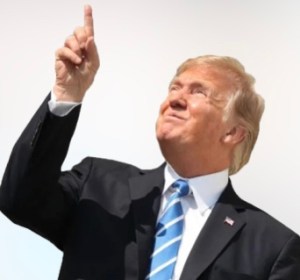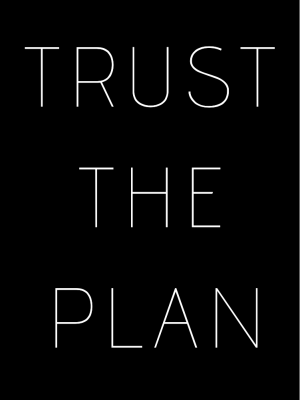COMMON LINK BETWEEN THE BUSH ADMINISTRATION & DEMOCRATS: Social Distancing
The Untold Story of the Birth of Social Distancing | The New York Times | Eric Lipton and Jennifer Steinhauer | June 11, 2020
The idea has been around for centuries. But it took a high school science fair, George W. Bush, history lessons and some determined researchers to overcome skepticism and make it federal policy.
WASHINGTON — Fourteen years ago, two federal government doctors, Richard Hatchett and Carter Mecher, met with a colleague at a burger joint in suburban Washington for a final review of a proposal they knew would be treated like a piñata: telling Americans to stay home from work and school the next time the country was hit by a deadly pandemic.
When they presented their plan not long after, it was met with skepticism and a degree of ridicule by senior officials, who like others in the United States had grown accustomed to relying on the pharmaceutical industry, with its ever-growing array of new treatments, to confront evolving health challenges.
Drs. Hatchett and Mecher were proposing instead that Americans in some places might have to turn back to an approach, self-isolation, first widely employed in the Middle Ages.
How that idea — born out of a request by President George W. Bush to ensure the nation was better prepared for the next contagious disease outbreak — became the heart of the national playbook for responding to a pandemic is one of the untold stories of the coronavirus crisis. This idea is literally the untold story of the birth of social distancing
It required the key proponents — Dr. Mecher, a Department of Veterans Affairs physician, and Dr. Hatchett, an oncologist turned White House adviser — to overcome intense initial opposition.
It brought their work together with that of a Defense Department team assigned to a similar task.
And it had some unexpected detours, including a deep dive into the history of the 1918 Spanish flu and an important discovery kicked off by a high school research project pursued by the daughter of a scientist at the Sandia National Laboratories.
The concept of social distancing is now intimately familiar to almost everyone. But as it first made its way through the federal bureaucracy in 2006 and 2007, it was viewed as impractical, unnecessary and politically infeasible.
“There were two words between ‘shut’ and ‘up’” initially, said Dr. Howard Markel, who directs the University of Michigan’s Center for the History of Medicine and who played a role in shaping the policy as a member of the Pentagon research team. “It was really ugly.”
Dr. Mecher was there when Dr. Hatchett presented government public health experts the plan that the two of them and Dr. Lisa M. Koonin of the Centers for Disease Control and Prevention had reviewed over burgers and beer.
“People could not believe that the strategy would be effective or even feasible,” Dr. Mecher recalled.
But within the Bush administration, they were encouraged to keep at it and follow the science. And ultimately, their arguments proved persuasive.
In February 2007, the C.D.C. made their approach — bureaucratically called Non-Pharmaceutical Interventions, or NPIs — official U.S. policy.
Following a five-year review by the Obama administration, the strategy was updated in a document published in 2017. And after long delays in which President Trump played down the threat from Covid-19, the disease caused by the coronavirus, and failed to heed warnings about it from inside his own government, it was used to encourage the states to lock down as confirmed cases and deaths shot up.
The Bush Initiative
The effort began in the summer of 2005 when Mr. Bush, already concerned with bioterrorism after the Sept. 11, 2001, attacks, read a forthcoming book, “The Great Influenza,” by John M. Barry, about the Spanish flu outbreak of 1918.
Mr. Bush’s concern was elevated by a string of new outbreaks caused by infectious diseases transferring from birds and other animals to humans, including an avian flu outbreak that year in Vietnam. Because there was no vaccine for these new threats, they could spread rapidly.
“A pandemic is a lot like a forest fire,” Mr. Bush said in a speech at the National Institutes of Health. “If caught early it might be extinguished with limited damage. If allowed to smolder, undetected, it can grow to an inferno that can spread quickly beyond our ability to control it.”
To develop ideas, the Bush administration enlisted Dr. Hatchett, who had served as a White House biodefense policy adviser, and Dr. Mecher, who was a Veterans Affairs medical officer in Georgia overseeing care in the Southeast.
“‘Someone from the White House is on the phone,’” Dr. Mecher, then 49, recalled his secretary telling him in the fall of 2005, her voice expressing some disbelief.
A blunt-speaking, Chicago-born intensive care physician, Dr. Mecher had almost no pandemic policy expertise. Instead, he was recruited because they needed someone who understood how a hospital actually worked, said Dr. Rajeev Venkayya, who was a special assistant to Mr. Bush for biodefense.
Dr. Koonin, who worked on preparedness planning at the C.D.C., also played a key role.
“Strategic, out-of-the-box thinkers,” is how Dr. Venkayya, who now oversees vaccine production at Takeda, a Japan-based pharmaceutical company, described what he was looking for.
The Social Network
Given the increased danger from new strains of influenza and the reality that existing antiviral drugs like Tamiflu did not work against all contagious diseases, Drs. Hatchett and Mecher and their team began exploring other ways to combat a large-scale contagion.
It was about that time that Dr. Mecher heard from Robert J. Glass, a senior scientist at Sandia in New Mexico who specialized in building advanced models to explain how complex systems work — and what can cause catastrophic failures.
Dr. Glass’s daughter Laura, then 14, had done a class project in which she built a model of social networks at her Albuquerque high school, and when Dr. Glass looked at it, he was intrigued. That’s right! A 14 year old was partially responsible for the untold story of the birth of social distancing.
Students are so closely tied together — in social networks and on school buses and in classrooms — that they were a near-perfect vehicle for a contagious disease to spread.
Dr. Glass piggybacked on his daughter’s work to explore with her what effect breaking up these networks would have on knocking down the disease.
The outcome of their research was startling. By closing the schools in a hypothetical town of 10,000 people, only 500 people got sick. If they remained open, half of the population would be infected.
“My God, we could use the same results she has and work from there,” Dr. Glass recalled thinking. He took their preliminary data and built on it by running it through the supercomputers at Sandia, more typically used to engineer nuclear weapons. (His daughter’s project was entered in the Intel International Science and Engineering Fair in 2006.)
Dr. Mecher received the results at his office in Washington and was amazed.
If cities closed their public schools, the data suggested, the spread of a disease would be significantly slowed, making this move perhaps the most important of all of the social distancing options they were considering.
“Targeted social distancing strategies can be designed to effectively mitigate the local progression of pandemic influenza without the use of vaccine or antiviral drugs,” concluded a study that Dr. Glass published in the Emerging Infectious Diseases journal. Laura, then a high school junior, got a credit.
Drs. Hatchett and Mecher and their team soon found themselves measuring the width of the standard school bus seat and the average classroom size in the United States, calculating how closely spaced students are and agreeing that any plan would have to feature closing schools.
At the same time, they were circling in on another fundamental challenge: If a government was going to rely on the blunt instrument of social distancing to prevent widespread death, how early would it have to act?
A Lesson from the Past
Dr. Markel had spent his career studying contagious disease outbreaks. Recently, he had been working on a related assignment from the Pentagon, which had a narrower but equally urgent concern: the vulnerability of U.S. military personnel to a viral health threat.
Asia was hit in 2005 by a bird flu that crossed over to humans and spread to locations where the United States had forces stationed, including the Philippines. That led Dr. Markel to propose — after consulting a dictionary and thesaurus — what he called “protective sequestration,” like keeping military personnel in mass isolation on docked ships.
According to the New York Times, the aforementioned is the untold story of the birth of social distancing.
Categories: Public Policy


















